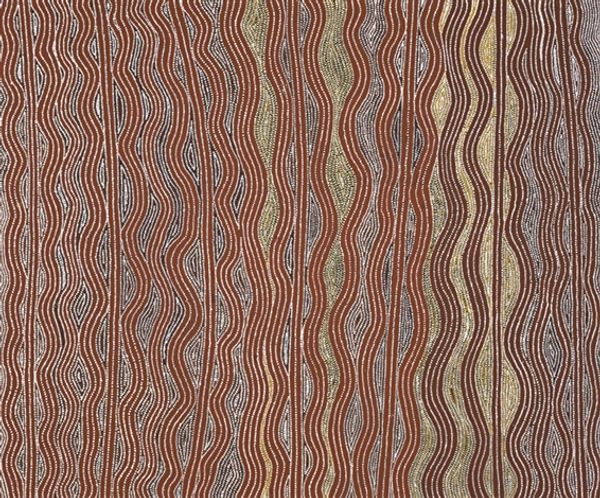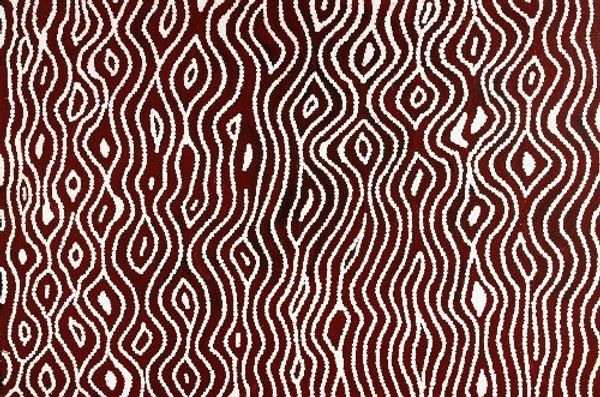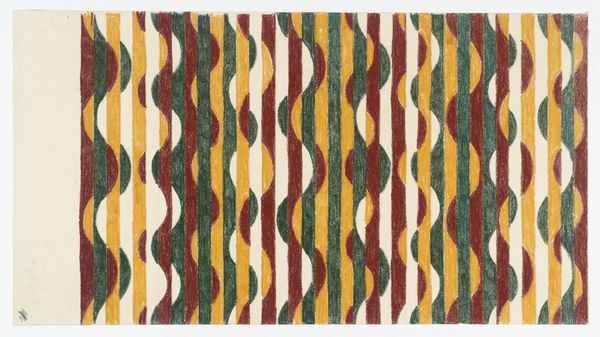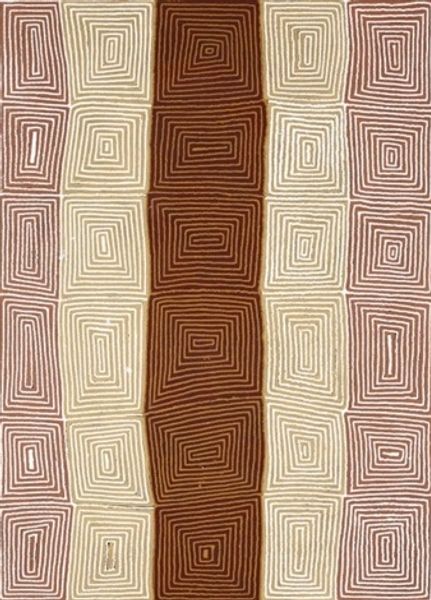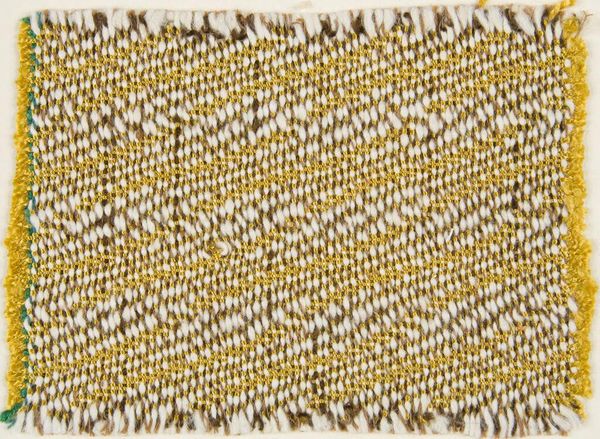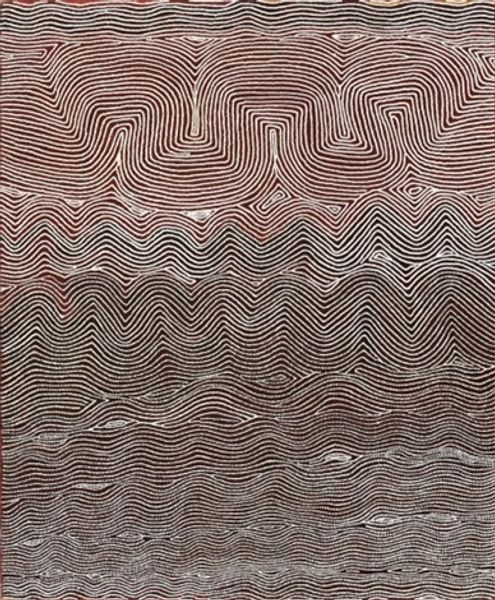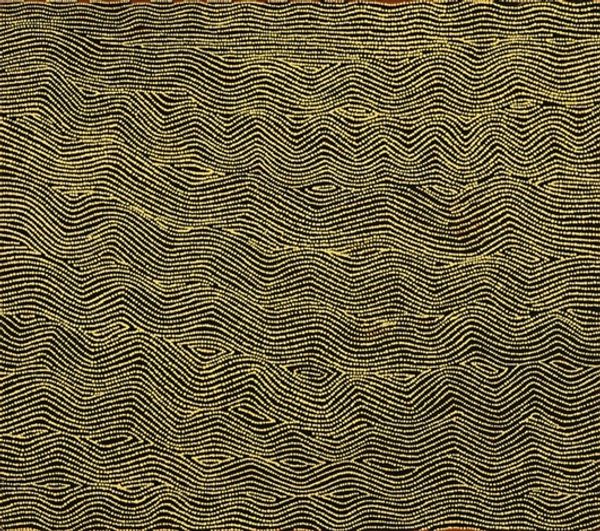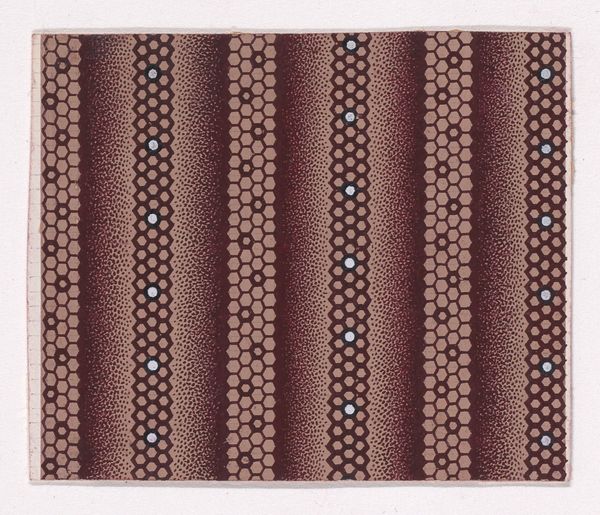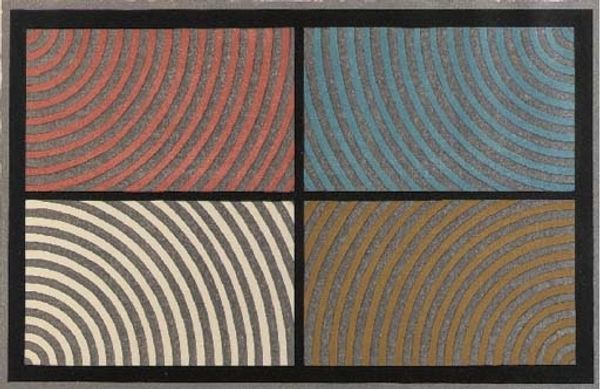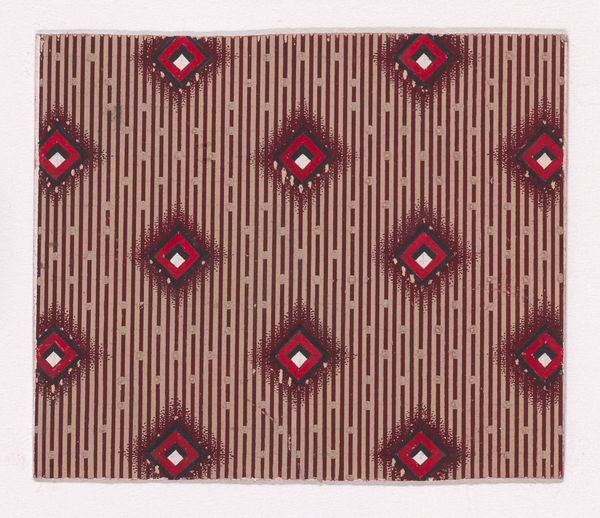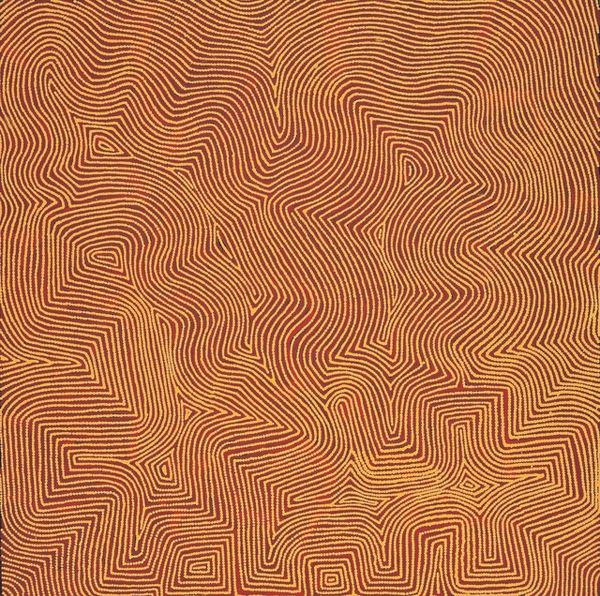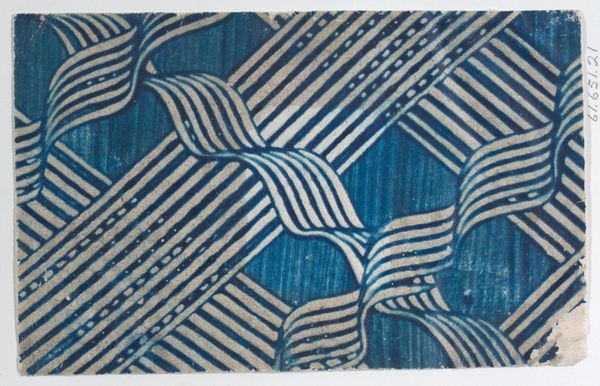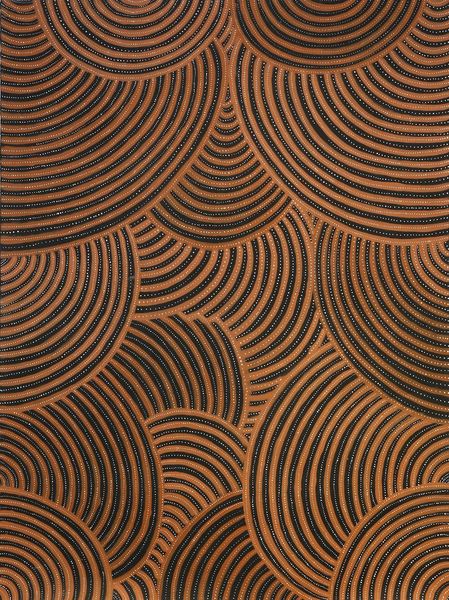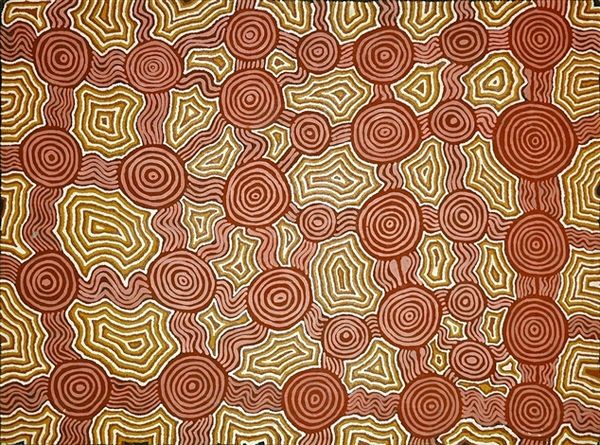
painting, acrylic-paint
#
naturalistic pattern
#
painting
#
acrylic-paint
#
geometric pattern
#
abstract pattern
#
organic pattern
#
geometric
#
repetition of pattern
#
vertical pattern
#
abstraction
#
line
#
pattern repetition
#
layered pattern
#
funky pattern
#
combined pattern
Copyright: Warlimpirrnga Tjapaltjarri,Fair Use
Curator: Right, let's talk about this mesmerizing piece, “Untitled (Designs Associated with the Site of Tarkul)” by Warlimpirrnga Tjapaltjarri, created in 1998. What's your gut reaction to it? Editor: It feels… elemental. Like peering at the Earth's core through a heat haze, or maybe a strange topographical map. There's a pulsing energy, wouldn't you agree? Curator: Absolutely. Tjapaltjarri was one of the last members of his community to make contact with European society, so the visual language speaks to a deep, unbroken connection to the land. We're looking at designs related to the Tarkul site, likely holding immense cultural significance. Look at the painting closely. The entire work is painstakingly rendered in these subtle patterns with earth-toned pigments, presumably sourced locally. Editor: It's astounding, the sheer labor of it. Makes me think about art as a form of devotion. These lines aren't just marks; they are a meditation. Almost like songlines rendered in paint. Does that resonate with you? Curator: That’s perceptive. The repetitive act of applying each dot suggests a ritualistic process, imbuing the painting with layers of meaning beyond the immediately visible imagery. These dots might be symbolic representations, mapping a journey, marking resources. The question is, what's their precise cultural narrative? Editor: It feels…sacred, somehow, regardless. Even without knowing the specific story, I can feel a reverence for the land and its stories radiating from this work. Does understanding the origin of the pigments themselves offer insights into Tjapaltjarri’s artistic intent and local knowledge? Curator: Good point. Knowing where these pigments come from, understanding the trade networks, the specific geological composition of the Tarkul region–it all anchors this abstraction within a specific, material reality. Editor: Precisely! Art isn't just in the inspiration, but also in the physical grind. And there’s such intimacy created between artist and nature through this act of finding, making and applying native pigments. Okay, now I'm seeing riverbeds, the scorching sun… maybe the dreams whispered on that land. It is now all I can think about. Curator: Well said. Ultimately, appreciating Tjapaltjarri's piece demands acknowledging the rich indigenous knowledge embedded within its visual vocabulary and material components. Editor: It invites us to contemplate not just what we see, but how it was made, what it means, and how deeply intertwined we all are with the landscapes that nurture us.
Comments
No comments
Be the first to comment and join the conversation on the ultimate creative platform.
